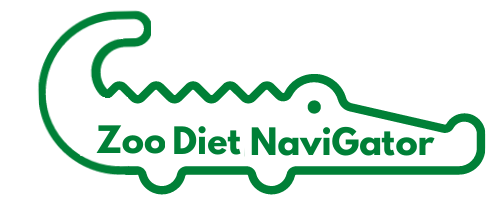FAQ: Difference between revisions
mNo edit summary |
mNo edit summary |
||
| Line 7: | Line 7: | ||
<translate>Likewise, consider carefully before "overwriting" data with different data. For example, if you used to feed Brand X Unicorn Chow, and now you feed Brand Y Unicorn Chow, it may be tempting to just rename the food Brand X to Brand Y and maybe update the nutrient data. However, this will overwrite the historical data for your unicorn herd. It will look like they've always eaten Brand Y. If you want to go back and understand your past decisions, you will not be able to recreate the knowledge about Brand X you had at the time.</translate> | <translate>Likewise, consider carefully before "overwriting" data with different data. For example, if you used to feed Brand X Unicorn Chow, and now you feed Brand Y Unicorn Chow, it may be tempting to just rename the food Brand X to Brand Y and maybe update the nutrient data. However, this will overwrite the historical data for your unicorn herd. It will look like they've always eaten Brand Y. If you want to go back and understand your past decisions, you will not be able to recreate the knowledge about Brand X you had at the time.</translate> | ||
==== <translate>Can I see my animal weights in Zoo Diet NaviGator?</translate> ==== | |||
<translate>No. It is bad data practice to store active data in more than one location. Your institution almost certainly has a system for tracking body weights, and you would end up with two animal weight histories in two locations, which may or may not be the same. While ZDN could certainly incorporate body weights in many ways, it is a deliberate choice to exclude it from this program to prevent discrepancies. </translate> | |||
==== <translate>I don't like creating diets, then assigning animals to diets. I want to take a list of animals and create a diet for each one.</translate> ==== | ==== <translate>I don't like creating diets, then assigning animals to diets. I want to take a list of animals and create a diet for each one.</translate> ==== | ||
Revision as of 02:08, 4 March 2024
Several deliberate design choices have been made in ZDN that may confuse new users. Here, I try to explain why those choices were made.
Why can't I delete diets or food items?
A core concept of ZDN is that these are institutional records. If your hippo used to eat apples, and now you don't feed anyone apples anymore, you still used to feed apples. It's part of your record for that animal. For the same reason, you can only inactivate animal diets, not delete them. Someone may need or want to know that you used to feed apples to your hippos. You may get a new hippo in the future and want to copy an older diet for it.
Likewise, consider carefully before "overwriting" data with different data. For example, if you used to feed Brand X Unicorn Chow, and now you feed Brand Y Unicorn Chow, it may be tempting to just rename the food Brand X to Brand Y and maybe update the nutrient data. However, this will overwrite the historical data for your unicorn herd. It will look like they've always eaten Brand Y. If you want to go back and understand your past decisions, you will not be able to recreate the knowledge about Brand X you had at the time.
No. It is bad data practice to store active data in more than one location. Your institution almost certainly has a system for tracking body weights, and you would end up with two animal weight histories in two locations, which may or may not be the same. While ZDN could certainly incorporate body weights in many ways, it is a deliberate choice to exclude it from this program to prevent discrepancies.
I don't like creating diets, then assigning animals to diets. I want to take a list of animals and create a diet for each one.
Fundamentally, zoo animals feed from what is prepared for them. So, even if you painstakingly create a special diet for Fluffy, if Fluffy lives in an aviary, Fluffy has access to many other food items intended for all the other birds there. Therefore, the fundamental unit of analysis is how the feed is prepped. The animals you intend to eat it may live with other animals and even local wildlife who share that food. The second, more pragmatic reason, is that zoo nutrition teams are often asked to prepare diets for animals who don't yet or may never exist. We may prepare diets for animals expected to arrive in the next day or two or who may not be accessioned yet. We may prepare diets for animals being temporarily held while in transit or wildlife rehab animals. We may prepare fruit bowls for display, food items for summer camp kids to turn into enrichment, or even create hypothetical diets for animals being considered for our collection so that we can get a cost estimate. In ZDN you can create diets without animals.
Why are the days printed on the left on paper diet cards? We've always had them on the right!
We did a lot of work to evaluate the layout of the diet cards, both in print and on-screen. We found, with hundreds of hours of data collection to support us, that it is much faster to prep from "days on the left" because you only scan down one column (days) and move your eyes right only for the items that occur today. If you list the food first (on the left), then you read every food, even if you don't need that food today, and then must scan every line to the right to see if it should be prepped today. Fundamentally, "days on the left" is about 25-35% faster than "days on the right".
< Uses
